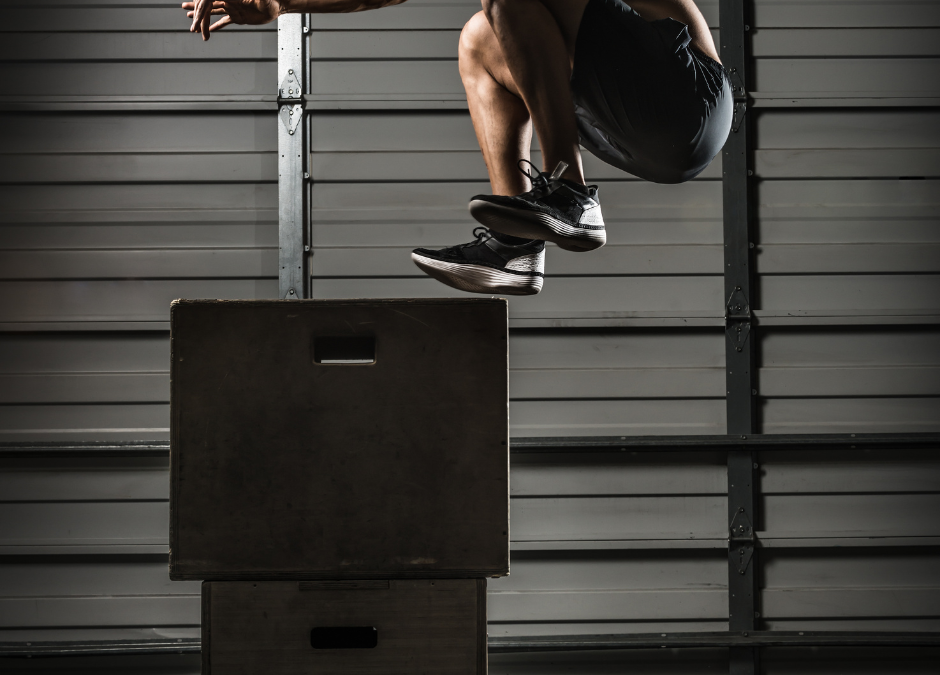Enhancing explosive power, speed, and agility is critical to increasing athletic performance. Plyometrics offers one of the most effective ways to achieve these goals. Plyometric exercises focus on dynamic, fast-twitch muscle engagement, helping athletes perform at their best in sports requiring quick bursts of energy and movement.
What Are Plyometrics?
Plyometric exercises involve rapid, explosive movements that stretch and contract muscles quickly. This combination of eccentric (lengthening) and concentric (shortening) muscle actions taps into the “stretch-shortening cycle,” maximizing muscle power and efficiency.
Popular plyometric exercises include:
– Box jumps
– Jump squats
– Lateral bounds
– Depth jumps
– Explosive push-ups
These exercises can be applied to various athletic goals, from improving vertical jumps to boosting overall speed and agility.
Increased Explosive Power
Plyometrics target fast-twitch muscle fibers, which are crucial for generating force and power in a short period. By repeatedly engaging in explosive movements, your muscles become conditioned to produce more power, faster. This is especially important in sports like basketball, soccer, and football, where explosive strength can directly affect performance, such as jumping for a rebound or sprinting to beat an opponent.
Enhanced Speed and Agility
Speed and agility are often make-or-break factors in athletic success. Plyometric exercises help condition muscles to contract more quickly and efficiently, boosting reaction times and quickness. The high-intensity, fast-paced nature of plyometrics helps athletes develop the necessary coordination and strength to change direction quickly or accelerate rapidly during competition.
Improved Coordination and Reflexes
Plyometrics challenge not only your muscles, but also your nervous system, sharpening the brain-muscle connection. The constant need to adjust, land, and jump again trains your body to be more responsive and coordinated, directly improving athletic reflexes and balance. This neuromuscular efficiency translates into faster movements and more precise control during competition.
Better Joint Stability and Injury Prevention
Many plyometric exercises emphasize landing mechanics, which helps reinforce proper form while strengthening the muscles surrounding your joints. This enhances joint stability in the ankles, knees, and hips which are critical for athletes. By improving strength and balance around these joints, plyometrics can also lower the risk of injuries.
Optimized Warm-Up Routine
Incorporating plyometric drills into your warm-up is an effective way to prepare your body for intense activity. Plyos increase heart rate, activate muscles, and prime your nervous system for high-performance output, all while mimicking the explosive movements required in most sports. Compared to traditional warm-ups, plyometric exercises can fast-track your body into a performance-ready state.
Improved Athletic Adaptability
Plyometrics focuses on multi-directional movement, which can better prepare athletes for the unpredictable nature of sports. From lateral jumps to rotational movements, these exercises simulate the diverse range of actions athletes often encounter in competition. This adaptability translates into better performance, whether it’s a quick pivot in basketball or a sprint down the soccer field.
Superior Sport-Specific Training
One of the greatest advantages of plyometrics is their ability to mimic sport-specific movements. Whether it’s a sprinter working on explosive bounding or a volleyball player enhancing their vertical jump, plyometrics offer a direct way to train the specific muscle groups and movement patterns used in competition. This makes them one of the most effective ways to transfer training gains into real-world performance.
Conclusion
For athletes looking to improve their power, speed, agility, and coordination, plyometric exercises offer a dynamic and effective training method. These explosive movements not only enhance physical performance but also engage the nervous system, helping athletes become faster, stronger, and more responsive in their respective sports. By integrating plyometrics into your training routine, you’ll build the foundation for greater athletic success.

